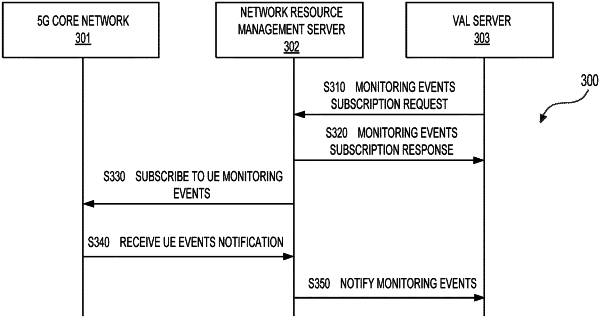| CPC H04W 72/20 (2023.01) [H04W 8/183 (2013.01); H04W 24/02 (2013.01); H04W 24/08 (2013.01); H04W 24/10 (2013.01); H04W 48/18 (2013.01); H04W 76/38 (2018.02)] | 20 Claims |

|
1. A method of a service enabler architecture layer (SEAL), comprising:
receiving a monitoring event subscription request for network connection status information at a network resource management server in the SEAL from a vertical application layer (VAL) server, the monitoring event subscription request for the network connection status information indicating:
a target VAL user equipment (UE),
a type of the network connection status information,
a timeout period indicating an amount of time lapsed after the monitoring event subscription request was transmitted, and
a pulling frequency for periodically providing the network connection status information;
obtaining the network connection status information of the target VAL UE from a wireless network system based on the monitoring event subscription request for the network connection status information;
transmitting a network connection status information response message including the network connection status information of the target VAL UE from the network resource management server in the SEAL to the VAL server at the pulling frequency indicated in the monitoring event subscription request; and
ending transmission of the network connection status information when a current time is outside of the timeout period indicated in the monitoring event subscription request.
|